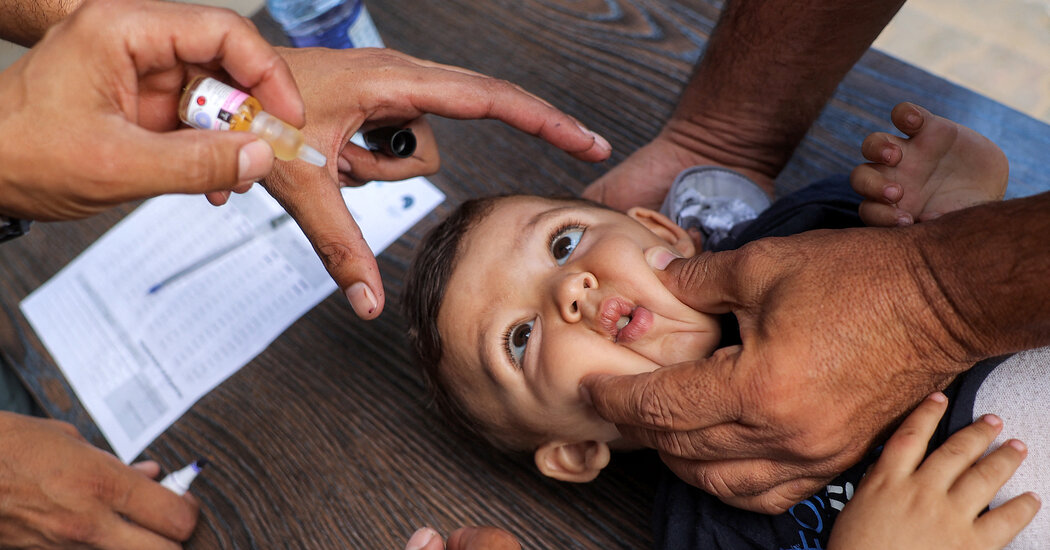In 2016, the global health authorities removed a type of poliovirus from the oral vaccine. The virus caused a growing number of outbreaks and has now arrived in Gaza.
The poliovirus that paralyzed a child in Gaza, the first case in the region in 25 years, has traveled a long path.
It most likely arose in Nigeria and made its way to Chad, where it was first detected in 2019, according to genetic analysis. It emerged in Sudan in 2020 and then found a foothold in Egypt, in unvaccinated pockets of Luxor and North Sinai — next door to Gaza.
This journey was the consequence of a fateful decision by global health organizations to pare down the oral polio vaccine in 2016. The move, now called “the switch,” was intended to help eradicate the disease.
Instead, the change has led to outbreaks of polio in dozens of countries and has paralyzed more than 3,300 children. A formal evaluation, commissioned by the global polio eradication program and led by two independent experts, was unflinching in its assessment: “The switch was an unqualified failure.”
One consequence now is the furious scramble to vaccinate hundreds of thousands of children in a decimated conflict zone, just the sort of environment in which polio thrives. It’s not yet clear whether the virus can be contained in Gaza.
